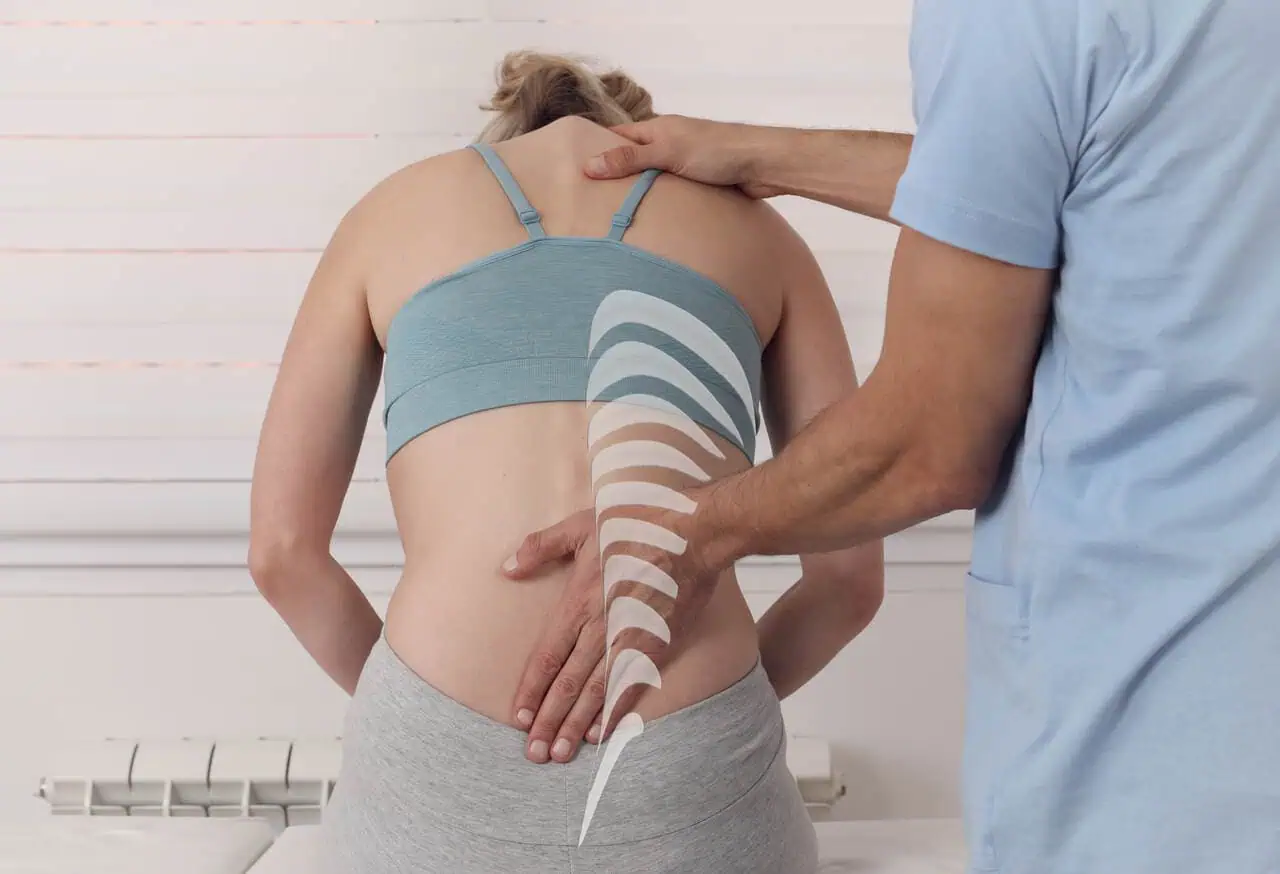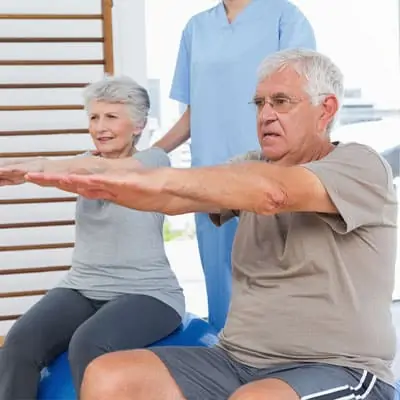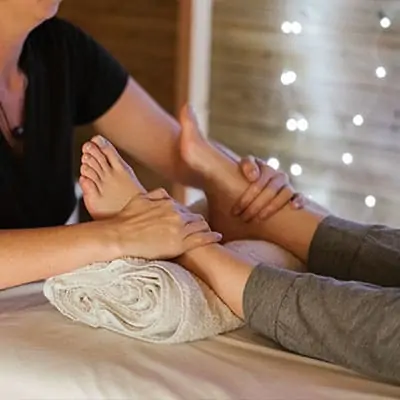Understanding Scoliosis
What is Scoliosis?
Scoliosis is a medical condition characterized by an abnormal lateral curvature of the spine. Instead of appearing straight when viewed from the back, a spine affected by scoliosis will curve to the side, resembling an “S” or “C” shape. This curvature can vary in severity, from mild to severe, and can occur at any point along the spine.
Scoliosis can be classified into several types based on its cause, such as idiopathic (most common, with unknown cause), congenital (present at birth), and neuromuscular (resulting from neurological or muscular conditions). For more detailed information, you can read our article on scoliosis types.
Effects of Scoliosis on Your Body
The effects of scoliosis on your body can be varied and depend on the severity of the spinal curvature. Common symptoms and physical manifestations include:
- Uneven shoulders
- One shoulder blade protruding more than the other
- Uneven waist
- One hip higher than the other
- Leaning to one side
In more severe cases, scoliosis can lead to complications, including:
- Chronic Back Pain: Persistent pain due to the abnormal curvature putting strain on muscles and ligaments. For more on managing pain, visit our article on scoliosis pain.
- Respiratory Issues: Severe curvature can affect lung capacity and breathing.
- Cardiovascular Problems: In extreme cases, the curvature can impact heart function.
- Reduced Mobility: Stiffness and reduced flexibility in the spine.
| Symptom | Description |
|---|---|
| Uneven shoulders | One shoulder sits higher than the other. |
| Protruding shoulder blade | One shoulder blade sticks out more. |
| Uneven waist | Noticeable asymmetry at the waistline. |
| Elevated hip | One hip appears higher than the other. |
Understanding the effects of scoliosis on your body is crucial for effective management and treatment. Physical therapy can play a significant role in alleviating symptoms and improving quality of life. For more information on treatment options, check out our article on scoliosis treatment.
Scoliosis can affect anyone, from children to adults. Early detection and intervention are key to managing the condition effectively. To learn more about how scoliosis affects different age groups, read our articles on scoliosis in children and scoliosis in adults.
Importance of Physical Therapy
Physical therapy plays a crucial role in managing and treating scoliosis. By incorporating various techniques and exercises, it helps reduce pain, improve function, and enhance the quality of life for individuals with scoliosis.
Benefits of Physical Therapy for Scoliosis
Physical therapy offers numerous benefits for those dealing with scoliosis. Some of the key advantages include:
- Pain Reduction: Targeted exercises help alleviate scoliosis pain by strengthening muscles and improving flexibility.
- Improved Posture: Therapy helps correct postural imbalances, reducing the curvature of the spine.
- Enhanced Mobility: Regular physical therapy can lead to increased range of motion and reduced stiffness.
- Strength Building: Strengthening exercises fortify the muscles supporting the spine, providing better stability.
- Breathing Improvement: Breathing exercises enhance lung function, which can be compromised in severe cases of scoliosis.
Role of Physical Therapy in Managing Scoliosis
Physical therapy is integral to the comprehensive management of scoliosis. It provides a non-invasive approach to control and reduce spinal curvature progression. Key roles of physical therapy in managing scoliosis include:
- Initial Assessment and Evaluation: During the initial assessment, therapists evaluate the severity and type of scoliosis, identifying specific areas needing attention.
- Custom Treatment Plans: Based on the assessment, a personalized treatment plan is developed, focusing on individual needs and scoliosis severity.
- Ongoing Monitoring: Progress is regularly monitored, and the treatment plan is adjusted accordingly to ensure optimal outcomes.
- Education and Training: Patients are educated on scoliosis and trained in exercises and techniques to practice at home, promoting self-management.
For example, a typical treatment plan may include:
| Activity | Frequency | Duration |
|---|---|---|
| Stretching Exercises | Daily | 15-20 minutes |
| Strengthening Exercises | 3 times a week | 30 minutes |
| Postural Correction Drills | Daily | Throughout the day |
| Breathing Exercises | Daily | 10 minutes |
Physical therapy is not just about exercises; it encompasses a holistic approach to scoliosis management by incorporating lifestyle changes and continuous support. This proactive approach helps patients live healthier, more active lives despite their condition. For more information on exercises tailored to specific age groups, visit our articles on scoliosis exercises for adults and scoliosis exercises for kids.
Getting Started with Scoliosis Physical Therapy
Embarking on the journey of scoliosis physical therapy begins with a comprehensive understanding of your condition and a well-structured treatment plan. This section will guide you through the initial steps.
Initial Assessment and Evaluation
Before starting any therapy, an initial assessment is crucial. This evaluation helps in understanding the specific characteristics of your scoliosis and identifying the best therapeutic approach.
- Medical History Review: Your therapist will start by reviewing your medical history, including any prior treatments or surgeries related to scoliosis.
- Physical Examination: This involves examining your spine, assessing your posture, and checking for any asymmetries in your shoulders, hips, or rib cage.
- Range of Motion Tests: These tests determine the flexibility and movement limitations of your spine.
- Strength Tests: Evaluating the strength of your back muscles is essential to tailor the therapy plan.
- Pain Assessment: Understanding the level and location of scoliosis pain helps in targeting specific areas during therapy.
| Assessment Type | Purpose |
|---|---|
| Medical History Review | Understand prior treatments |
| Physical Examination | Assess spine and posture |
| Range of Motion Tests | Determine movement limitations |
| Strength Tests | Evaluate muscle strength |
| Pain Assessment | Identify pain level and location |
Developing a Treatment Plan
Once the initial assessment is complete, the next step is to develop a personalized treatment plan. This plan is tailored to your specific needs and aims to manage and alleviate the symptoms of scoliosis.
- Goal Setting: Establishing clear, realistic goals is the foundation of an effective treatment plan. These goals may include improving posture, increasing flexibility, and reducing pain.
- Exercise Routine: Incorporating scoliosis exercises into your daily routine is essential. These exercises focus on stretching, strengthening, and postural correction.
- Therapy Frequency: Determining the frequency of your therapy sessions is crucial for consistency. Your therapist will recommend the number of sessions per week based on your condition.
- Home Exercises: In addition to in-clinic sessions, you will be given exercises to perform at home. This helps in maintaining continuity and accelerating progress.
- Progress Monitoring: Regular evaluations to track your progress and make necessary adjustments to your treatment plan.
| Treatment Plan Component | Description |
|---|---|
| Goal Setting | Establish clear, realistic goals |
| Exercise Routine | Include stretching and strengthening exercises |
| Therapy Frequency | Determine number of sessions per week |
| Home Exercises | Assign exercises for home practice |
| Progress Monitoring | Regular evaluations and adjustments |
By understanding the initial steps of scoliosis physical therapy, you can embark on a well-structured and effective treatment journey. For more information on managing scoliosis, explore our articles on scoliosis treatment, scoliosis exercises for adults, and scoliosis management.
Types of Physical Therapy Techniques
Physical therapy plays a vital role in managing scoliosis. Several techniques are especially beneficial for those with scoliosis, including stretching and strengthening exercises, postural correction techniques, and breathing exercises.
Stretching and Strengthening Exercises
Stretching and strengthening exercises aim to improve flexibility and muscle strength, which can help stabilize the spine and reduce discomfort. These exercises target specific muscle groups to address imbalances caused by scoliosis.
| Exercise Type | Target Area | Benefits |
|---|---|---|
| Hamstring Stretch | Hamstrings | Increases flexibility, reduces lower back tension |
| Core Strengthening | Abdominals | Enhances stability, reduces spinal strain |
| Shoulder Blade Squeeze | Upper back | Improves posture, strengthens upper back muscles |
For more detailed exercises, refer to our article on scoliosis exercises.
Postural Correction Techniques
Postural correction techniques focus on aligning the body to reduce the curvature of the spine. Proper posture can alleviate pain and prevent further spinal deformity.
| Technique | Focus Area | Benefits |
|---|---|---|
| Wall Angels | Upper back and shoulders | Encourages correct posture, reduces upper back tension |
| Pelvic Tilts | Lower back and pelvis | Aligns spine, strengthens lower back |
| Seated Row | Upper back | Improves posture, strengthens back muscles |
These techniques can be particularly effective when combined with other forms of scoliosis treatment.
Breathing Exercises
Breathing exercises are essential for improving lung capacity and promoting spinal stability. These exercises help enhance the overall respiratory function, which can be compromised due to the curvature of the spine.
| Exercise | Focus Area | Benefits |
|---|---|---|
| Diaphragmatic Breathing | Diaphragm | Increases lung capacity, reduces stress |
| Rib Stretch Breathing | Rib cage | Expands chest, improves lung function |
| Pursed Lip Breathing | Lungs | Enhances breath control, promotes relaxation |
Incorporating these exercises into your routine can substantially improve your quality of life. For more insights, check out our article on scoliosis management.
By understanding and utilizing these physical therapy techniques, you can better manage scoliosis and improve your overall well-being.
Progressing in Your Therapy
As you continue with your scoliosis physical therapy, it’s important to track your progress, make necessary adjustments to your treatment plan, and set achievable goals.
Monitoring Your Progress
Tracking your progress in therapy is crucial for understanding how well your body is responding to the exercises and techniques. Regular assessments help in identifying improvements and areas that need more focus. During each session, your therapist might measure your range of motion, observe your posture, and assess pain levels.
| Metric | Initial Assessment | Month 1 | Month 3 | Month 6 |
|---|---|---|---|---|
| Range of Motion (degrees) | 45 | 50 | 55 | 60 |
| Pain Level (1-10) | 7 | 5 | 3 | 2 |
| Posture Score (1-10) | 4 | 5 | 7 | 8 |
Regular monitoring helps in understanding how well the therapy is working and what changes might be needed.
Adjusting Your Treatment Plan
Based on your progress, your physical therapist may adjust your treatment plan. Adjustments ensure that the therapy remains effective and continues to meet your needs. This may involve modifying exercises, changing the intensity, or introducing new techniques.
For instance, if your range of motion has improved significantly, your therapist might incorporate more advanced scoliosis exercises to further enhance flexibility and strength. Conversely, if certain exercises cause discomfort, they might be replaced or modified to better suit your condition.
Setting Realistic Goals
Setting achievable goals is essential for maintaining motivation and ensuring steady progress. Goals should be specific, measurable, attainable, relevant, and time-bound (SMART).
Examples of realistic goals might include:
- Increasing your range of motion by 10 degrees within three months.
- Reducing pain levels by half within six months.
- Improving posture score by two points within three months.
| Goal | Specific | Measurable | Attainable | Relevant | Time-bound |
|---|---|---|---|---|---|
| Increase range of motion | Yes | 10 degrees | Yes | Yes | 3 months |
| Reduce pain levels | Yes | 50% | Yes | Yes | 6 months |
| Improve posture score | Yes | 2 points | Yes | Yes | 3 months |
Setting and achieving these goals will help you stay on track and continuously improve your condition. Regularly reviewing and updating your goals with your therapist ensures they remain aligned with your progress and needs.
For more detailed guidance on managing scoliosis, visit our articles on scoliosis treatment and scoliosis management.
Lifestyle Changes and Maintenance
Incorporating Exercise into Your Routine
Incorporating exercise into your daily routine is vital for managing scoliosis. Engaging in regular physical activity helps strengthen muscles, improve flexibility, and maintain spinal alignment. Activities like swimming, yoga, and Pilates can be particularly beneficial. For specific exercises tailored to your needs, refer to our guide on scoliosis exercises.
| Exercise Type | Frequency (per week) | Duration (minutes) |
|---|---|---|
| Swimming | 2-3 times | 30-45 |
| Yoga | 2-3 times | 30-60 |
| Pilates | 2-3 times | 30-60 |
Maintaining Good Posture
Good posture is crucial in managing scoliosis. Practicing correct posture reduces strain on your spine and alleviates discomfort. Ensure that you sit and stand with your shoulders back, chest open, and feet hip-width apart. Using ergonomic furniture and taking regular breaks to adjust your position can also help.
| Posture Tips | Description |
|---|---|
| Sitting | Use a chair with good lumbar support, keep feet flat on the floor |
| Standing | Distribute weight evenly on both feet, avoid slouching |
| Sleeping | Use a firm mattress, avoid sleeping on your stomach |
Long-Term Management of Scoliosis through Physical Therapy
Long-term management of scoliosis involves a combination of physical therapy, regular exercise, and lifestyle adjustments. Consistent physical therapy sessions help monitor your progress and make necessary adjustments to your treatment plan. Engaging in exercises that target core strength and flexibility can significantly improve your condition over time. For more detailed guidance, consult our article on scoliosis management.
| Management Strategy | Frequency | Notes |
|---|---|---|
| Physical Therapy | Weekly/Bi-weekly | Ongoing assessment and adjustments |
| Core Strengthening Exercises | Daily | Engage in activities like planks and bridges |
| Flexibility Exercises | Daily | Incorporate stretching routines |
By incorporating these lifestyle changes and maintaining a proactive approach, you can effectively manage scoliosis and enhance your overall quality of life. For more information on scoliosis treatments and exercises, explore our comprehensive articles on scoliosis treatment and scoliosis exercises for adults.











